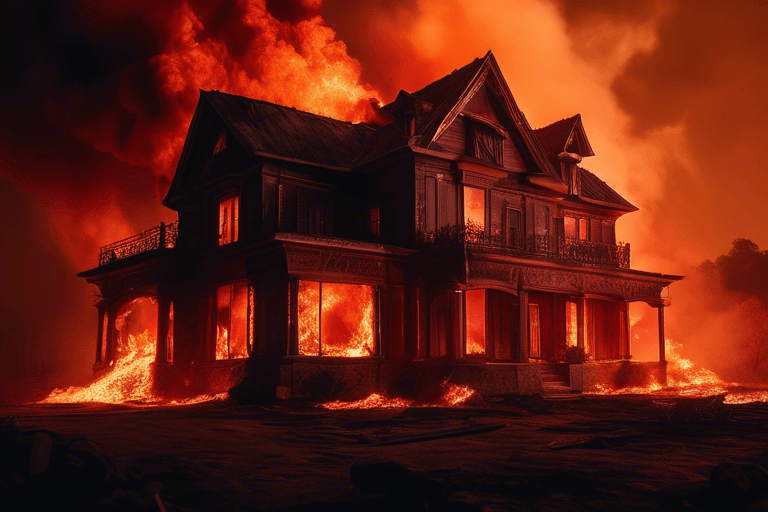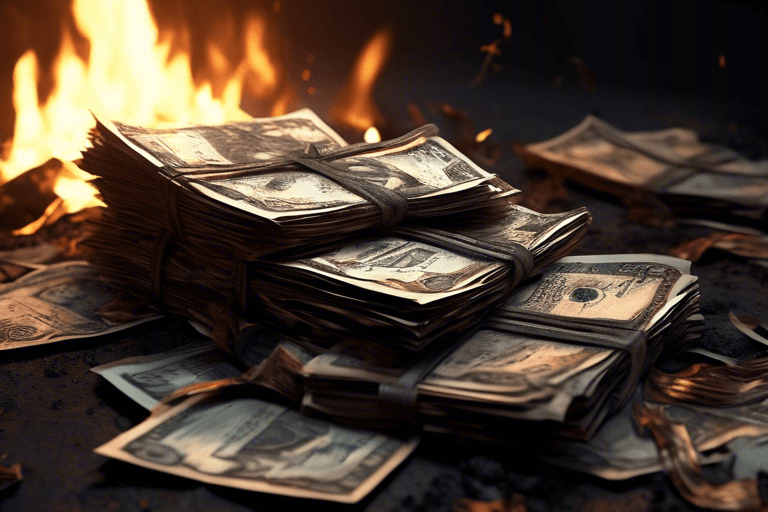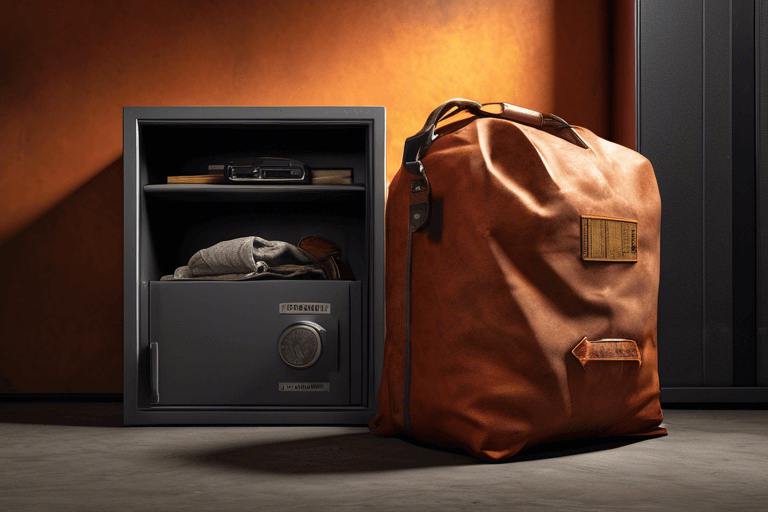
How to Safeguard Your Valuables from Fire Damage
Protecting your valuables from fire damage is of utmost importance. Fires can occur unexpectedly and result in the loss of cherished possessions, financial investments, and irreplaceable memories.
In this guide, we will discuss effective strategies and safety measures to safeguard your valuables in case of a fire. By following these steps, you can ensure that your most prized possessions remain protected and secure.
Understand the Risks
Before delving into the various methods of protecting your valuables, it is essential to understand the risks associated with fire damage. Fires can spread rapidly and destroy everything in their path.
They can be caused by various factors, such as electrical faults, cooking accidents, or natural disasters like wildfires.
By comprehending the potential dangers, you can take proactive steps to minimize the risk of fire damage and protect your valuables effectively.
Selecting the Right Safe
One of the most reliable methods to safeguard your valuables from fire damage is by investing in a high-quality safe. Safes offer different levels of protection, and it is crucial to choose the right one based on your specific needs.
There are primarily two types of home safes: fire safes and burglary safes. Whilst all safes are designed to resist theft to some extent, here's the difference:
Fire Safes
Fire safes are designed to protect the contents from heat and smoke. They are heavily insulated and often compact and portable.
When selecting a fire safe, it is important to look for models that have been rated by reputable organizations like Underwriters Laboratories (UL) or Intertek (ETK).
These ratings indicate the level of protection the safe offers and the maximum temperature it can withstand.
For example, a UL Class 350 1-hour fire rating ensures that the internal temperature of the safe will not exceed 350 degrees Fahrenheit for at least one hour when exposed to external temperatures over 1,700 degrees.
Why 350 degrees? Well, paper will char at around 387 degrees and can burst into flames at 451 degrees. Something to consider if your list of items to protect from fire includes physical cash or important documents like passports and birth certificates.
It is vital to consider the type of items you plan to store in the safe and choose one that offers adequate protection for them.
Burglary Safes
Burglary safes, as the name suggests, are designed to protect your valuables against forced entry. They are specifically constructed to resist break-in attempts and are often heavier and thicker than fire safes.
Burglary safes are classified by their resistance to different types of tools and the amount of time it takes to penetrate them. The higher the rating, the more secure the safe. For instance, a TL-30 rating indicates that the safe can resist attack for up to 30 minutes.
Yes, many safes can offer both fire and theft resistance; just understand that not all safes are created equal. Many burglary-resistant safes will not have adequate fire resistance and many lower quality fire safes will be easier to break into due to their construction.
For protecting valuable items against fire damage, choose a safe with a fire rating of at least 30 minutes. This will typically be enough time for emergency services to respond and extinguish the flames, though of course, the longer the fire rating, the better.
For optimal fire resistance, consider installing the safe on the ground floor (or even basement), somewhere not adjacent to exterior walls or windows. For added security, consider the weight of the safe and whether it can be bolted to the floor or wall.
Consult with your insurance agent to determine if certain types of safes can qualify you for discounts on your insurance premiums.
Proper Storage Techniques
In addition to investing in a quality safe, employing proper storage techniques can further protect your valuables from fire damage. Here are some practical tips to consider:
Waterproof and Fireproof Storage
For regular items that you want to protect from fire and water damage, consider using waterproof and fireproof storage options.
These specialized containers provide an extra layer of protection and ensure that even in the event of a fire (or water from a fireman's hose), your valuables remain safe and undamaged. Look for storage boxes that have been specifically designed to withstand both fire and water.
Storing in Optimal Locations
In case of a fire, it is important to keep your valuables away from sources of heat and potential entry points for smoke and flames.
Elevate your items off the floor and store them in areas that are not directly adjacent to windows or doors. This can help protect your valuables from heat damage and minimize the risk of smoke infiltration.
Consider Specialized Safes
Certain items may require specialized storage solutions to ensure their safety. For example, high-security jewelry safes are designed to protect valuable jewelry collections.
These safes often offer UL-rated burglary and fire protection, along with customized storage options to keep your jewelry organized and secure.
Gun safes are another example of specialized storage solutions, offering secure storage for firearms and ammunition. These safes are typically fire-resistant and come with racks to hold weapons securely.
Documentation and Inventory
In addition to physical protection, it is helpful to have proper documentation and inventory of your valuables. This documentation serves multiple purposes, including insurance claims and accurate record-keeping. Here are some steps to consider:
Create an Inventory
Make a comprehensive inventory of all your valuables, including detailed descriptions, conditions, and values. This inventory will serve as a reference in case of fire damage or loss. It is important to update the inventory regularly as you acquire new items or dispose of old ones.
Document Valuables with Photos or Videos
To further enhance your documentation, take photos or videos of your valuables and store them in a safe place. This visual evidence can be crucial for insurance claims and can help in the identification and recovery of your belongings.
Keep Purchase Proofs and Insurance Information
Preserve receipts, warranties, and certificates of authenticity for your valuable items. These documents not only provide proof of ownership but also assist in the claims process.
Review your insurance policy to ensure that it adequately covers your valuables and consider updating it if necessary.
Additional Safety Measures
While investing in a safe and employing proper storage techniques are essential, there are additional safety measures you can take to further protect your valuables from fire damage.
Consider the following:
Install Fire Safety Equipment
Installing fire safety equipment in your home is crucial for early detection and prevention of fires. Smoke alarms, fire extinguishers, and sprinkler systems can provide valuable time to contain a fire and protect your valuables.
Make sure to check and maintain these devices regularly to ensure they are in proper working condition.
Maintain a Defensible Space
If you live in an area prone to wildfires, creating a defensible space around your property can help protect your valuables. Clear vegetation, maintain a safe distance between flammable materials and your home, and follow local fire safety guidelines.
Proper landscaping and maintenance can minimize the risk of fire spreading to your property.
Stay Informed and Educated
Stay informed about fire safety precautions and best practices. Educate yourself and your family members on fire prevention techniques and emergency evacuation procedures.
Regularly review and update your fire safety plan to ensure everyone knows what to do in case of a fire.
Be Prepared Ahead of Time
Protecting your valuables from fire damage requires a multi-faceted approach combining proper storage techniques, investing in a quality safe, and maintaining fire safety measures.
By implementing these strategies, you can significantly reduce the risk of fire damage to your most cherished possessions. Remember to regularly review and update your safety measures to stay prepared for any unforeseen events.
Safeguarding your valuables is not just about protecting material possessions; it's about preserving the memories and sentimental value attached to them. Stay vigilant and prioritize the safety of your valuables to ensure peace of mind in the face of potential fire hazards.



